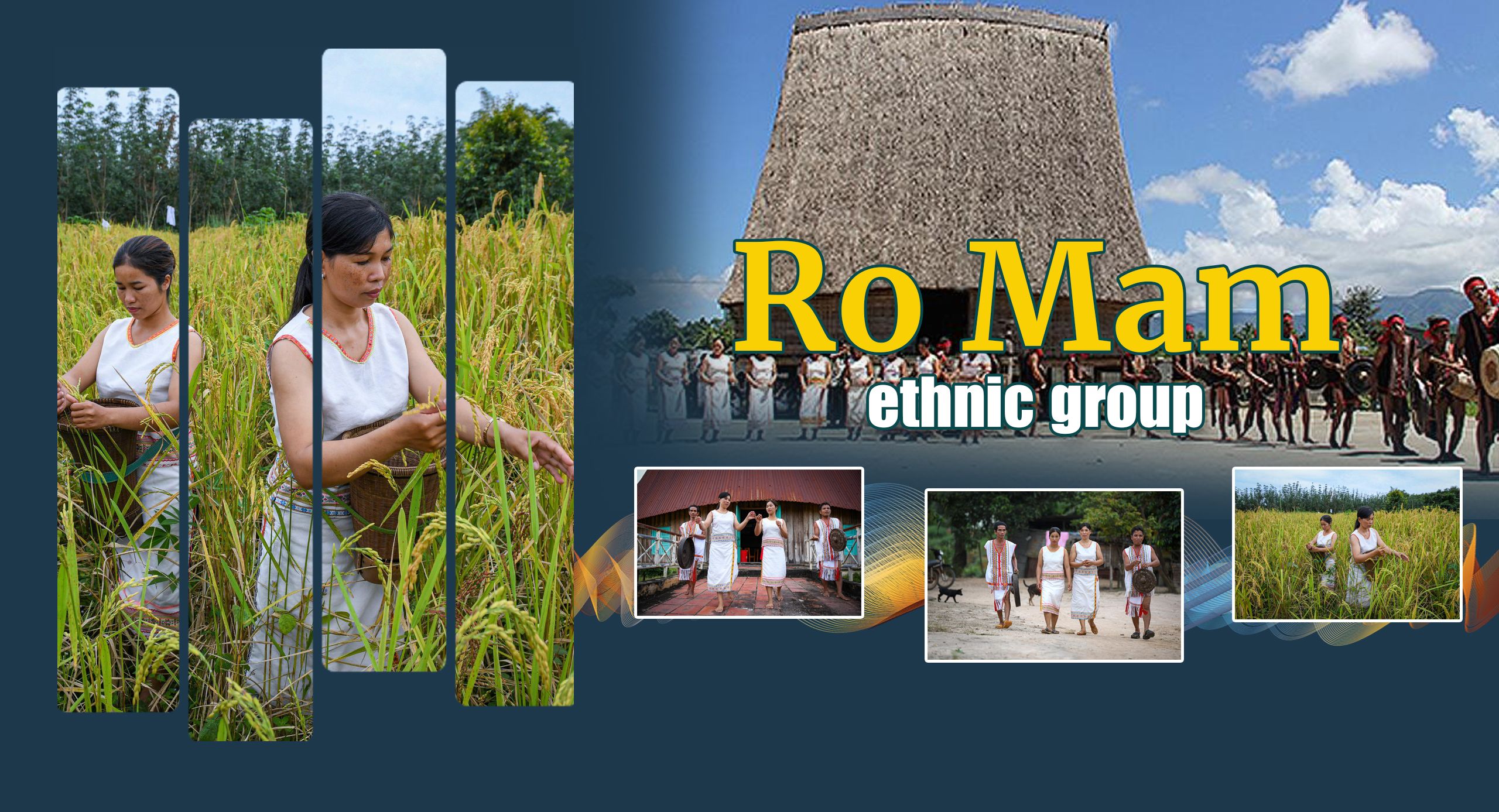
The Ro Mam ethnic group is one of the three smallest ethnic groups in Vietnam (with its population only exceeding the Brau and O Du). The Ro Mam now live a sedentary life, focusing on economic development and preserving traditional culture.
1. Historical origin
Although scientists have yet to clearly determine the historical origin of the Ro Mam people, this ethnic group has been present in Vietnam for a long time.
2. Population
According to the results of the survey on the socio-economic status of 54 ethnic minority groups in 2019, the population of the Ro Mam people was 639 people as of April 1, 2019, including 317 males and 322 females. Around 88.4% of the population lives in rural areas.
3. Geographical distribution
Historically, in the early years of the twentieth century, the Ro Mam population was still relatively large, scattered across 12 villages mixed with the Giarai people in Kon Tum Province. Having experienced many events, there is now only one village with a small population in the contiguous place between Vietnam and Cambodia, in Sa Thay District, Kon Tum Province.
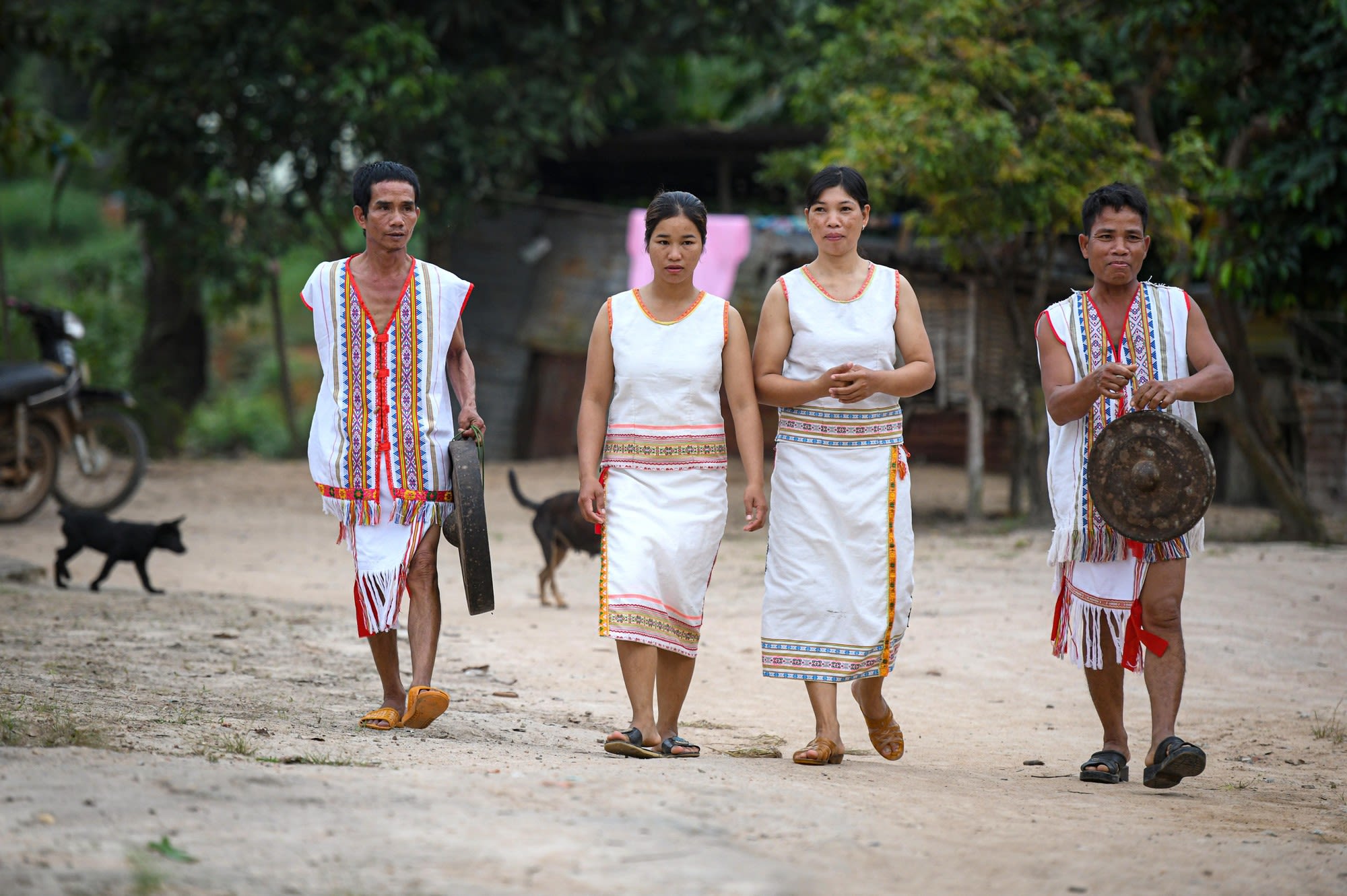
Photo: THANH DAT
Photo: THANH DAT
4. Language
The language belongs to the Mon-Khmer language group (Southern Asian language family). The Ro Mam are now fluently using the languages of many ethnic groups, including Vietnamese, a strand of Viet-Muong (northern Vietic language), within the Austroasiatic languages.
Education: According to the Survey of 53 ethnic minorities issued on April 1, 2019, the rate of people aged 15 years and older who can read and write has reached 80.0%. The proportion of people at the primary level is 106.1%, people at lower secondary schools is 77.1%, and people at high school is 58.3%. Meanwhile, the rate of out-of-school children is 15.7%.
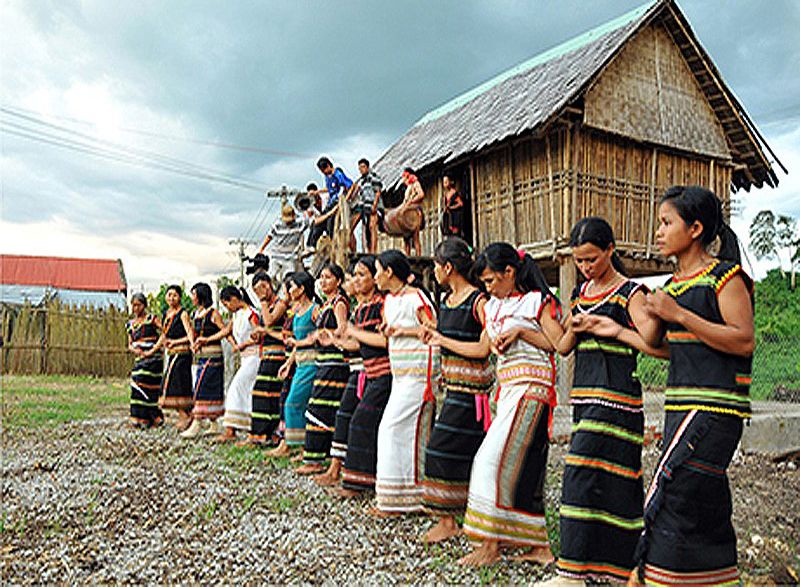
The Ro Mam people in Le Village, Mo Rai Commune, Sa Thay District, are busy celebrating Le Mung Com Moi (New Rice Celebration). (Photo: Kon Tum Newspaper)
The Ro Mam people in Le Village, Mo Rai Commune, Sa Thay District, are busy celebrating Le Mung Com Moi (New Rice Celebration). (Photo: Kon Tum Newspaper)
5. Main features
Cuisine: The practice of eating with bare hands still exists quite popular at the present time. On holidays and festivals, Ro Mam people drink alcohol made from rice, cassava, or corn.
Costumes: The Ro Mam traditional costume shows the group’s preservation of its traditional values. Ro Mam men wears a white loincloth with the front flap hanging down to the knees and the back flap down to the ankles. Women wear skirts, going topless, some wear pullovers. Skirts and loincloths are all white in rustic, undyed fabrics. Women like to wear earrings made of ivory or wood. Young men and women all cut four or six of their top incisor teeth upon entering adulthood.
Housing: The Ro Mam’s house is a long stilt-house which accommodates several extended families. The two-roof house has bamboo walls and a relatively low floor. It also has another open floor where the rice mortar is placed. The house is divided along into two parts with a passage in the middle. The front and back parts are further divided into rooms for member families. The middle part is for receiving guests and common activities of member families. The Ro Mam village is surrounded by a fence to ward off wild beasts and cattle from other villages. Houses in the village are arranged in a closed oval in the middle of which is nha rong (communal house) where community rituals and events are held.
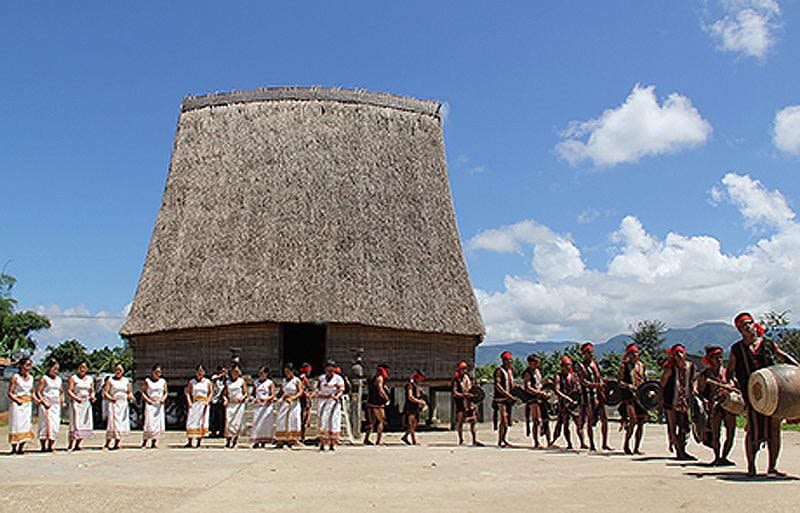
The Ro Mam people in Le Village (Mo Rai Commune, Sa Thay District) beat gongs and dance in the Le Mung Com Moi (New Rice Celebration). (Photo: Kon Tum Newspaper)
The Ro Mam people in Le Village (Mo Rai Commune, Sa Thay District) beat gongs and dance in the Le Mung Com Moi (New Rice Celebration). (Photo: Kon Tum Newspaper)
Social relations: The village head is an elder, who is the oldest person in the village, elected by the people. All members in village relate to each other on the basis of equality of obligations and rights. The social relations here still preserve quite strongly the remnants of the transition period between the matrilineal period to the patriarchy.
Marriage: The wedding ceremony was held simply, just a communal meal of the villagers to witness and congratulate the first common meal of the bride and groom. After the wedding day, the young couple live with the wife's house for 4-5 years and then either stay with the husband's house or alternately reside on both sides. Divorce is very rare.
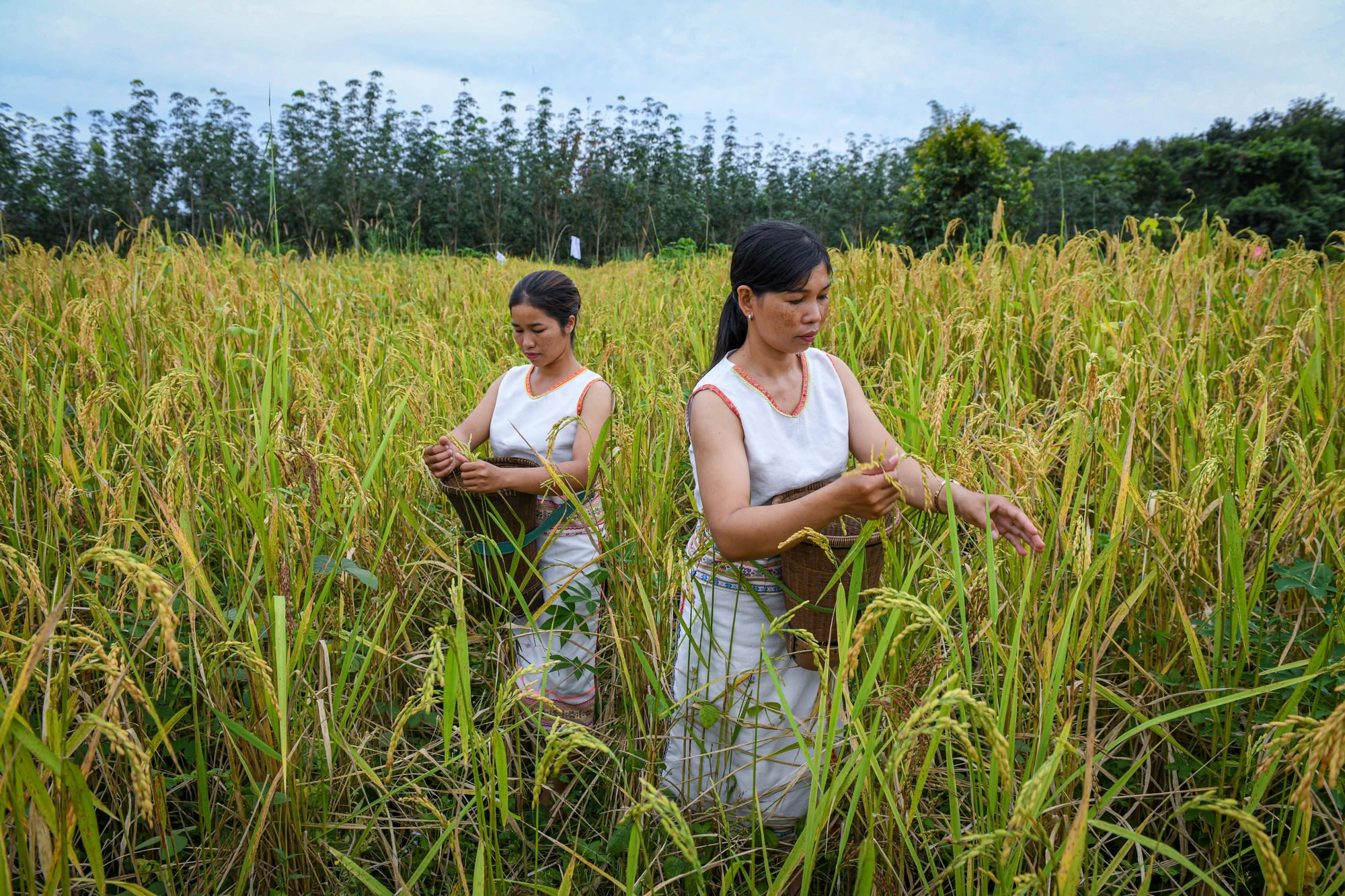
The Ro Mam people live by farming; growing sticky rice is the main (Photo: THANH DAT)
The Ro Mam people live by farming; growing sticky rice is the main (Photo: THANH DAT)
Funeral: Ro Mam people often use drums to announce that someone has died in their house. A Ro Mam funeral usually lasts two or three days. When a member dies, the family places the dead in a coffin in front of the house with his head turned to the home. The deceased is buried at the village graveyard, facing in a direction that avoids his face looking to the village to keep the village safe from misfortunes.
Worship: The Ro Mam people believe every creature has a spirit. One of the spirits that people worship the most is the rice god. The rituals for the rice spirit are usually held during the production cycle from the start of the slashing of the field until the land is set on fire, and eventually when the rice is brought to the house.
Festivals: The biggest festival is usually held after the harvest season. After the new rice festival is the time to take place a series of weddings of young men and women and the rituals for the dead.
6. Economic conditions
The Ro Mam people live by farming, growing sticky rice as the main, along with corn and cassava. Among the secondary occupations of the family, cotton growing and weaving are the most developed. In the past, the woven fabric was enough to provide for the family's needs, in addition to being exchanged for cooking oil and salt. Currently, thanks to the special policy of the State, the Ro Mam people have restructured crops and livestock to bring about higher economic efficiency.
According to the survey of 53 ethnic minorities dated April 1, 2019, the poverty rate in Ro Mam ethnic community is 33.3%, and the rate of near-poor households is 36.4%. The percentage of households getting access to clean water is 94.6%, and the percentage of households getting access to electricity is 98.4%.